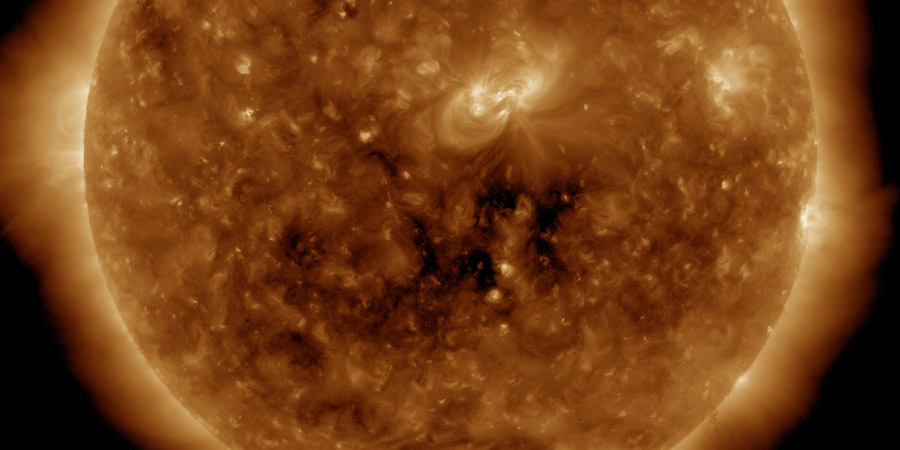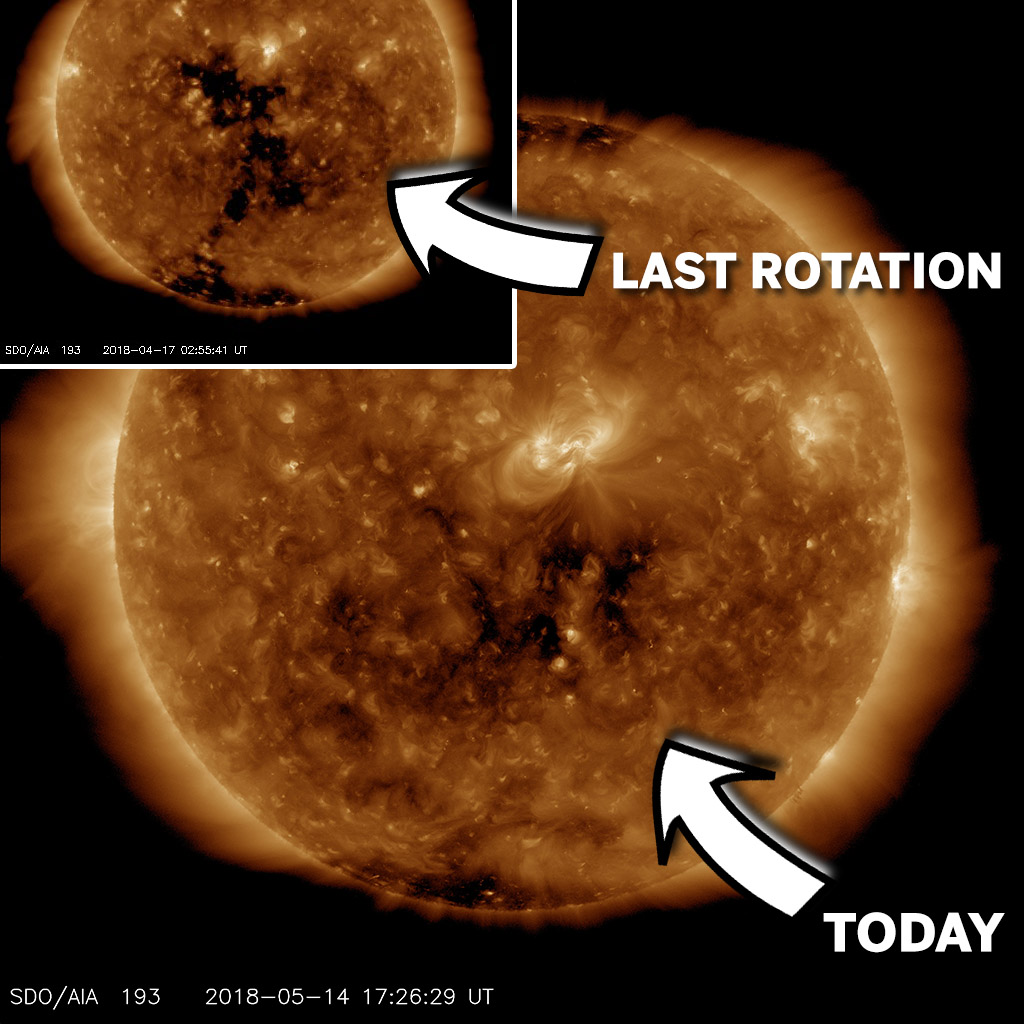''A shadow of its former self''
Monday, 14 May 2018 18:10 UTC

A lot of aurora enthusiasts have put 17 May in their agenda as a possible date for some enhanced geomagnetic activity and thus auroral displays. Why? Because that is the date that a coronal hole solar wind stream is expected to arrive at Earth from a coronal hole that managed to give us moderate G2 geomagnetic storm conditions back in April.
Great news I hear you think. Well... yes that is great news of course but as the reliable news source that we are... we are going to have to be all serious and stuff and put everyone with their feet back on the ground. Brace yourself because here comes the truth:
This coronal hole is only a shadow of its former self. Coronal holes are dynamic solar features that can persist for months or even years which polar coronal holes are known to do around solar minimum. However, coronal holes can also grow or disappear over the course of just weeks. This coronal hole did just that, it is diminishing in size. Just check out the picture below to see how it changed in less than one month's time.

Indeed the dark area which is the coronal hole has decreased dramatically in size. That means less high speed solar wind particles are escaping from that area and as a result, we should not expect the same kind of geomagnetic conditions as we've seen in April. In fact, we highly doubt that what is left of this coronal hole is even enough to bring us active geomagnetic conditions, let alone G1 geomagnetic storm conditions. Only if you are at a high latitude locations you might see some enhanced auroral displays but it looks like this coronal hole is down for the count. Sorry about the bad news but that's solar minimum for ya!
Thank you for reading this article! Did you have any trouble with the technical terms used in this article? Our help section is the place to be where you can find in-depth articles, a FAQ and a list with common abbreviations. Still puzzled? Just post on our forum where we will help you the best we can!
Latest news
Latest forum messages
Support SpaceWeatherLive.com!
A lot of people come to SpaceWeatherLive to follow the Sun's activity or if there is aurora to be seen, but with more traffic comes higher server costs. Consider a donation if you enjoy SpaceWeatherLive so we can keep the website online!

Space weather facts
| Last X-flare | 2024/03/28 | X1.1 |
| Last M-flare | 2024/04/27 | M3.0 |
| Last geomagnetic storm | 2024/04/26 | Kp5+ (G1) |
| Spotless days | |
|---|---|
| Last spotless day | 2022/06/08 |
| Monthly mean Sunspot Number | |
|---|---|
| March 2024 | 104.9 -19.8 |
| Last 30 days | 139.7 +33.3 |


